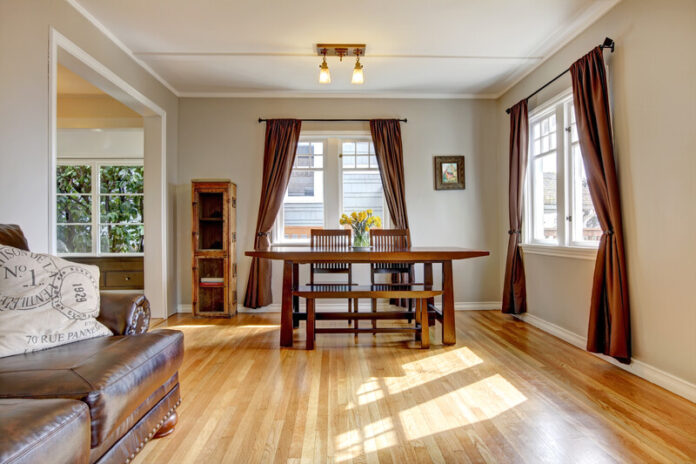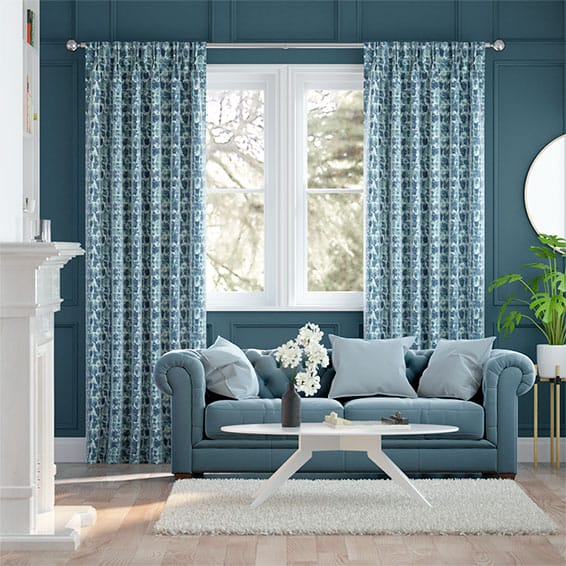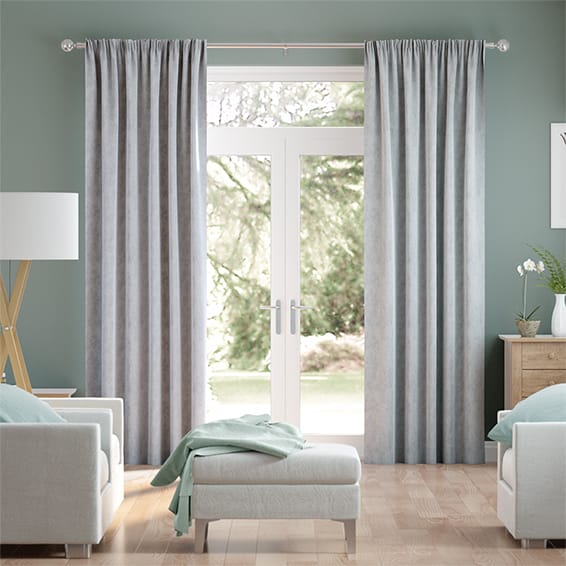Regardless of how perfectly decorated your living room may be, you still need the final touch – the curtains. Curtains frame your bare windows effectively while ensuring that you are protected against heat, cold, and prying eyes. If you are undecided about what to buy, here is a complete guide from Spectrum Curtains & Blinds on how to choose the perfect curtains for your living room.
Deciding on the Length
There are different window lengths that you can decide on, depending on the size of your window, its location, the presence of equipment or furniture under it, and of course, your personal preference. In ready-made curtains, there are 5 standard lengths. These are:
Sill – The sill length falls about 1/2″ above your windowsill. Among the standard curtain lengths, this is the shortest. This length is best if you want a casual look and want to hang a curtain with a bold color or fun pattern.
Best for: Small windows and those that are above furniture such as tables and consoles, heaters, or counters.
Apron – The Apron length falls 1″ below the window apron. This should be measured from below the apron bottom. This was a popular option and not as used these days but is still a great option.
Best for: Windows above furniture or radiators. Apron-length curtains are also best for window seats.
Floor – Floor-length curtains actually do not touch the floor since these ends about 1/2″ over the floor surface. It is a popular length for the living room and is excellent for creating visually long windows. If your living room needs to appear taller, this is the perfect length to use. Plus, the length is a good choice if you do not want dander, dirt, and pet hair to stick to the fabric.
Best for: Focal windows in the living room that are not above any furniture or appliance.
Trouser – The Trouser length is 2″ longer than the length of a curtain that touches the floor’s surface, similar to the length of dress pants. This creates a chic, tailored appearance and looks especially lovely and elegant if you are using crisp and thick fabric.
Best for: Formal-looking living rooms or an area in the living room that has less foot traffic.
Puddle – The Puddle length is 4″ to 6″ longer than the Trouser length. This is a good length to use if you prefer your living room curtains to look dramatic and luxurious. If you want a curtain that makes a statement, this is the best length to use.
Best for: Tall windows in the living room where the curtains do not have to be opened and closed. This is practical only if you do not have pets and clean the floor regularly.
Choosing the Best Fabric
Curtains come in natural, synthetic, and combination fabrics, so you literally have hundreds to choose from in terms of texture, design, and color. When it comes to your living room, choosing the right type of fabric is important, especially if you live in certain areas. Some types of fabric, for example, work best for cooler regions while others are better for warmer regions. Here are some of the best options you have:
Cotton
Cotton is versatile and easy to clean. Cotton curtains are available in a wide range of styles and colors. The fabric falls nicely over the windows but if you want a softer type of curtain, cotton does tend to appear and feel slightly stiff.
Linen
Linen looks great in a casual living room. It is light yet luxurious and has a clean, crisp look. Because of its natural weave, it offers a bit of sheerness to allow some light and fresh air in. In winter, linen also works well as an added layer of insulation. It is long-lasting, eco-friendly, and drapes beautifully.
Silk
If you want a traditional and classic look, go for silk curtains. These work especially well in formal living rooms. Silk is also a type of fabric to go for if you want to rock the Puddle length. They do tend to be sheer and are a good option for letting the light in. If you want more privacy, consider using lined curtains for the job.
Sheers
Sheers let plenty of light through, which makes them ideal if you want a bright living room with an airy feel. They are not a top option if you want more privacy, however.
Velvet
For uber-luxury, heavy velvet is the best option. This type of fabric is beautiful to look at and can help provide some insulation during the cold months. However, it works best in formal or semi-formal living rooms. It is rarely used in more casual settings.
Color and Pattern
Curtains can and will steal the show, which means that the right option will work marvelously well with the existing living room design while the wrong one will clash painfully. When choosing the color and pattern, it is important not to purchase on a whim. Instead, consider these elements very carefully. Use the existing furniture and wall color as references. Better yet, purchase fabric swatches so you can decide whether or not a certain color and/or pattern works well before you make a decision.
Taking Measurements of Your Windows
For most curtains, the ideal number of sheets or materials is about 2 to 3 times more. When hung, the curtains should appear full – not stretched out. To obtain the correct curtain measurement, use the curtain rod installed for a specific window and measure the length of the rod. If the rod is 40″ in length, multiply this figure by 2 to get the ideal width of the curtains for that window. In this case, the ideal curtain width would be 80″ for that window.
Picking the Fullness
After taking the width measurement, you could decide about the fullness of the curtain. Based on the example above, a curtain sheet with a width of 80″ can already provide basic or standard fullness. If you want to achieve Deluxe fullness, you could multiply the length of the rod by 2.5. If you want Ultra fullness, you could multiply the length of the rod by 3. In case the measurement of your rod results to a figure that does not end in zero (for example, the curtain rod length is 36″, multiplied by 2 is 72″), you could round up to the next whole or full number (instead of 72″, use 80″).




















